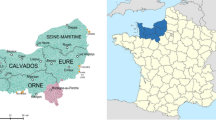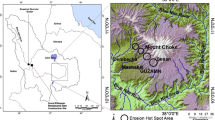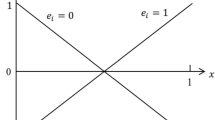Abstract
An increasing number of papers analyse the inclusion of collective/spatial conditionality constraints in agricultural policies dealing with natural resource management. In this article we theoretically assess the conditions in which employing collective conditionality constraints linked to incentives better reach the social preferences on PG provision by agriculture. We deal with this issue by using a coalition formation model to endogenize the size of the group of farmers cooperating, and investigate how it is affected by different policy schemes. We analyse and compare the following policy schemes: (1) a homogenous payment that target the whole population of farmers, (2) a coalition bonus, that incentivizes only the contributions by the coalition members, and (3) a coalition bonus associated to a MPR on the size of the coalition. The results show that formulating payments that discriminate between co-operators and free-riders, and associating to such a payment a MPR, is relatively more effective than the traditional homogenous payments. However this is true only under some (local) conditions that we theoretically derived.





Similar content being viewed by others
Notes
Art. 46, Regulation (Eu) No 1307/2013 of the European Parliament and of the Council.
Paragraph 22 and art 28, Regulation (EU) No 1305/2013 of the European Parliament and of the Council.
References
Ahmed R, Segerson K (2011) Collective voluntary agreements to eliminate polluting products. Resour Energy Econ 33:572–588. https://doi.org/10.1016/j.reseneeco.2011.01.002
Albers HJ, Ando AW, Batz M (2008) Patterns of multi-agent land conservation: crowding in/out, agglomeration, and policy. Resour Energy Econ 30:492–508. https://doi.org/10.1016/j.reseneeco.2008.04.001
Alvarado-Quesada I, Weikard H-P (2017) International cooperation on biodiversity conservation when spatial structures matter. Spat Econ Anal 12:27–49. https://doi.org/10.1080/17421772.2017.1259494
Ansink E, Bouma J (2013) Effective support for community resource management. For Policy Econ 37:94–103
Banerjee S, Kwasnica AM, Shortle JS (2012) Agglomeration bonus in small and large local networks: a laboratory examination of spatial coordination. Ecol Econ 84:142–152. https://doi.org/10.1016/j.ecolecon.2012.09.005
Banerjee S, De Vries FP, Hanley N, Van Soest DP (2014) The impact of information provision on agglomeration bonus performance: an experimental study on local networks. Am J Agr Econ 96:1009–1029
Barrett S (1994) Self-enforcing international environmental agreements. Oxf Econ Pap 46:878–894. https://doi.org/10.2307/2663505
Barrett S (2006) Climate treaties and“breakthrough” technologies. Am Econ Rev 96:22–25. https://doi.org/10.1257/000282806777212332
Baylis K, Peplow S, Rausser G, Simon L (2008) Agri-environmental policies in the EU and United States: a comparison. Ecol Econ 65:753–764. https://doi.org/10.1016/j.ecolecon.2007.07.034
Brau R, Carraro C (2011) The design of voluntary agreements in oligopolistic markets. J Regul Econ 39:111–142. https://doi.org/10.1007/s11149-010-9134-z
Carraro C, Siniscalco D (1993) Strategies for the international protection of the environment. J Public Econ 52:309–328. https://doi.org/10.1016/0047-2727(93)90037-T
Carraro C, Marchiori C, Oreffice S (2009) Endogenous minimum participation in international environmental treaties. Environ Resource Econ 42:411–425. https://doi.org/10.1007/s10640-009-9264-x
Cong R-G, Smith HG, Olsson O, Brady M (2014) Managing ecosystem services for agriculture: will landscape-scale management pay? Ecol Econ 99:53–62. https://doi.org/10.1016/j.ecolecon.2014.01.007
Drechsler M, Wätzold F, Johst K, Shogren JF (2010) An agglomeration payment for cost-effective biodiversity conservation in spatially structured landscapes. Resour Energy Econ 32:261–275. https://doi.org/10.1016/j.reseneeco.2009.11.015
Dupraz P, Latouche K, Turpin N (2009) Threshold effect and co-ordination of agri-environmental efforts. J Environ Planning Manage 52:613–630
Epanchin-Niell RS, Wilen JE (2015) Individual and cooperative management of invasive species in human-mediated landscapes. Am J Agr Econ 97:180–198. https://doi.org/10.1093/ajae/aau058
Finus M, Rübbelke DG (2013) Public good provision and ancillary benefits: the case of climate agreements. Environ Resource Econ 56:211–226. https://doi.org/10.1007/s10640-012-9570-6
Fooks JR, Higgins N, Messer KD et al (2016) Conserving spatially explicit benefits in ecosystem service markets: experimental tests of network bonuses and spatial targeting. Am J Agr Econ 98:468–488. https://doi.org/10.1093/ajae/aav061
Franks JR (2011) The collective provision of environmental goods: a discussion of contractual issues. J Environ Planning Manage 54:637–660. https://doi.org/10.1080/09640568.2010.526380
Gegenbach MF, Weikard H-P, Ansink E (2010) Cleaning a river: an analysis of voluntary joint action. Nat Resour Model 23:565–590. https://doi.org/10.1111/j.1939-7445.2010.00074.x
Janssen MA (2013) The role of information in governing the commons: experimental results. Ecol Soc. https://doi.org/10.5751/ES-05664-180404
Lefebvre M, Espinosa M, Gomez y Paloma S et al (2015) Agricultural landscapes as multi-scale public good and the role of the Common Agricultural Policy. J Environ Planning Manage 58:2088–2112. https://doi.org/10.1080/09640568.2014.891975
Madani K, Dinar A (2012) Cooperative institutions for sustainable common pool resource management: application to groundwater. Water Resour Res 48:W09553. https://doi.org/10.1029/2011WR010849
McEvoy D, Jones M, McKee M, Talberth J (2014) Incentivizing cooperative agreements for sustainable forest management: experimental tests of alternative structures and institutional rules. For Policy Econ 44:34–41. https://doi.org/10.1016/j.forpol.2014.03.006
OECD (2013) Providing agri-environmental public goods through collective action. Organisation for Economic Co-operation and Development, Paris
Ostrom E (1990) Governing the commons: the evolution of institutions for collective action. Cambridge University Press, Cambridge
Parkhurst GM, Shogren JF, Bastian C et al (2002) Agglomeration bonus: an incentive mechanism to reunite fragmented habitat for biodiversity conservation. Ecol Econ 41:305–328. https://doi.org/10.1016/S0921-8009(02)00036-8
Rutz S (2001) Minimum participation rules and the effectiveness of multilateral environmental agreements. Swiss Federal Institute of Technology, Center for Economic Research, Zurich
Segerson K (2013) Voluntary approaches to environmental protection and resource management. Annu Rev Resour Econ 5:161–180. https://doi.org/10.1146/annurev-resource-091912-151945
USDA (1998) Conservation reserve program-oregon state enhancement program. US Department of Agriculture Farm Service Agency, Washington
Wätzold F, Drechsler M (2014) Agglomeration payment, agglomeration bonus or homogeneous payment? Resour Energy Econ 37:85–101. https://doi.org/10.1016/j.reseneeco.2013.11.011
Weikard H-P, Wangler L, Freytag A (2015) Minimum participation rules with heterogeneous countries. Environ Resource Econ 62:711–727. https://doi.org/10.1007/s10640-014-9861-1
Westerink J, Jongeneel R, Polman N et al (2017) Collaborative governance arrangements to deliver spatially coordinated agri-environmental management. Land Use Policy 69:176–192. https://doi.org/10.1016/j.landusepol.2017.09.002
Acknowledgments
The authors thank the two anonymous reviewers for their comments, which significantly helped to improve the manuscript. Any remaining errors are our own responsibility. The article is based on the PhD thesis of Matteo Zavalloni.
Author information
Authors and Affiliations
Corresponding author
Appendices
Appendix A
We derive the model used in the article from a simple model of land allocation between agriculture (x, with benefit y) and PG (l, with benefit g). Agriculture has a quadratic cost function with parameter k. Total available land is L. Thus:
In case if g = 0 we have that l = 0, no land is allocated to PG and the land allocated to agriculture is \( x^{*} = \frac{y}{k} \). The allocation of land to PG is fully costly in terms of agricultural production as long as \( L \le \frac{y}{k} \). Solving the land constraint for x and substituting it in the profit function yields: \( \pi = gl + y(L - l) - \frac{1}{2}kL^{2} - \frac{1}{2}kl^{2} + klL \). If we substitute \( L = \frac{y}{k} \) profit becomes \( \pi = gl + \frac{1}{2}\frac{{y^{2} }}{k} - \frac{1}{2}kl^{2} \) which has a fixed component \( \frac{1}{2}\frac{{y^{2} }}{k} \) and the rest is the function that we use in the article. By taking FOC with respect to l yields \( l^{*} = g/k \), which must be lower than y/k, so that g≤ y. y however does not directly enter our problem.
Appendix B
2.1 Appendix B1
To find the stable coalition after the introduction of a payment, start from πf(s − 1):
which becomes:
We then put πf(s − 1) and πm(s) in the stability function
We set the stability function equal to 0, which after some steps becomes:
We have two solutions. First it is observed that:
holds when b > g and p > g:
Since a negative coalition is meaningless, we exclude the solution: \( s = 2 - \frac{{\sqrt {g^{2} + 2bg + 2pb + b^{2} } }}{g} \).
We then evaluate the second solution by substituting it in the first derivative of Z with respect to s, and assess whether is negative: \( Z_{s} \left( {2 + \frac{{\sqrt {g^{2} + 2bg + 2pb + b^{2} } }}{g}} \right) < 0 \).
The derivative is: \( \frac{dZ}{ds} = - g^{2} s + 2g^{2} \). We set \( \frac{dZ}{ds} < 0 \) obtaining: \( - s + 2 < 0 \). Substituting \( s = 2 + \frac{1}{g}\sqrt {g^{2} + b^{2} + 2pb + 2gb} \) yields:
which is surely negative and thus that confirms:
2.2 Appendix B2
Profits for coalition members in the CB scheme are:
Profits for free riders are:
The coalition of size s = t (with a MPR) is stable as long as \( \pi_{m}^{CB} (s = t) \ge \pi_{f} (s = t - 1) \):
note that:
2.3 Appendix B3
The total contribution from the whole population:
The stable coalition when p = 0 is:
Thus L becomes:
Setting a homogenous payment leads to a size of the stable coalition of 3; total protected land is given by:
and after substituting \( s^{*} \) = 3 becomes:
When is discriminating convenient? Or when LCB > LHP:
After substituting ρ:
which can be substituted in either LCB > LHP to find \( \hat{L} \).
Rights and permissions
About this article
Cite this article
Zavalloni, M., Raggi, M. & Viaggi, D. Agri-environmental Policies and Public Goods: An Assessment of Coalition Incentives and Minimum Participation Rules. Environ Resource Econ 72, 1023–1040 (2019). https://doi.org/10.1007/s10640-018-0237-9
Accepted:
Published:
Issue Date:
DOI: https://doi.org/10.1007/s10640-018-0237-9




